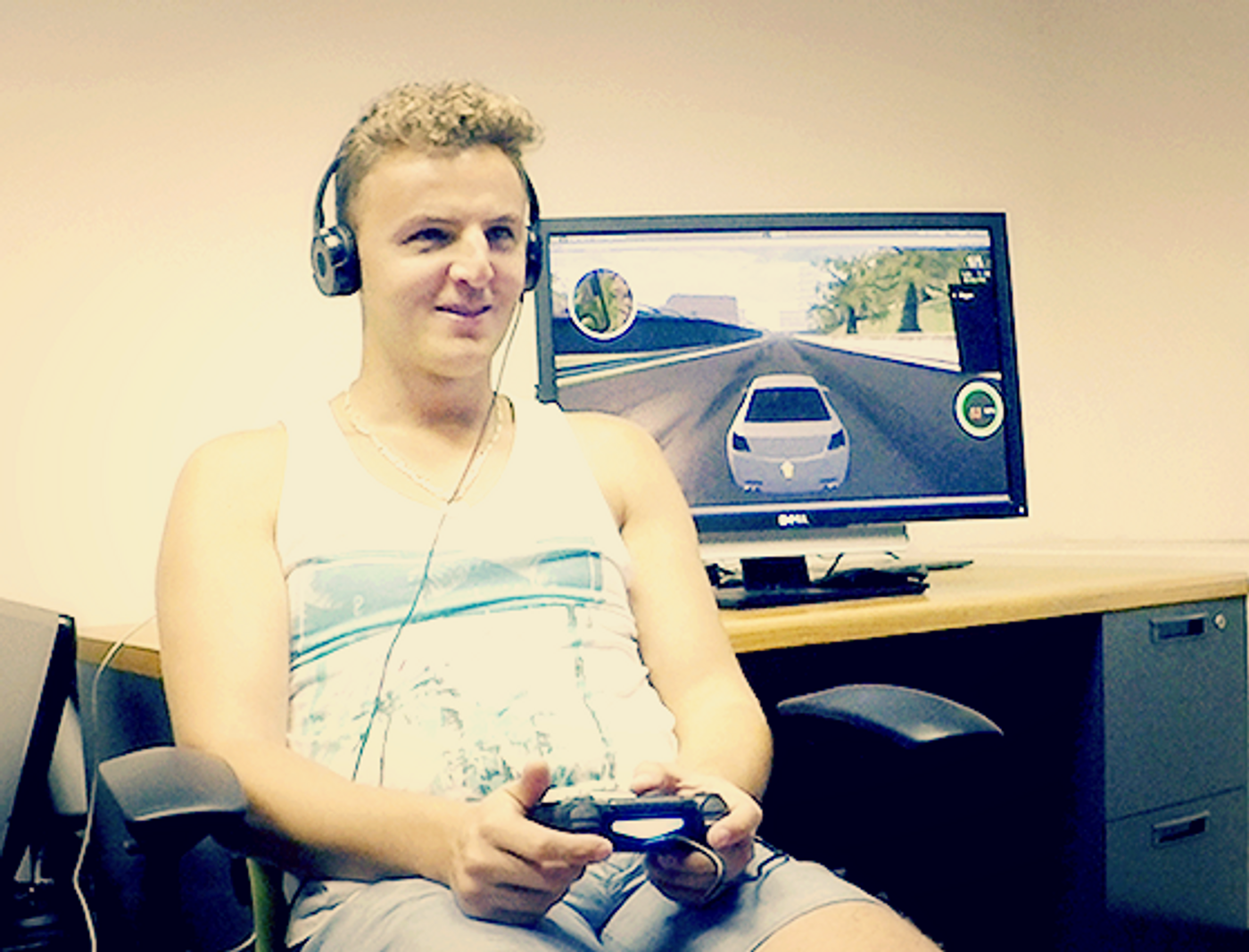RAD System Empowers the Blind to Win Racing Games
Racing auditory display, or RAD, is an audio-based user interface that enables players with visual impairments to play standard video games that focus on racing. It uses multiple sonification techniques to translate the games’ video inputs into sounds that alert the player to what is happening with the track and vehicle. RAD empowers blind players to succeed in races, playing as well as sighted players. An estimated 253 million people live with some kind of vision impairment and might enjoy this new gaming option.
“The RAD is the first system to make it possible for people who are blind to play a ‘real’ 3D racing game–with full 3D graphics, realistic vehicle physics, complex racetracks and a standard PlayStation 4 controller,” Brian A. Smith, a Computer Science Ph.D. candidate at Columbia Engineering who developed the project with T.C. Chang Professor of Computer Science Shree Nayar, told Tech Crunch.
The RAD has two primary techniques of sonification: using non-speech audio to communicate data. One is referred to in the related paper as the “sound slider” – this conveys the car’s speed and trajectory. The second is the “turn indicator system,” which is able to tell players about the traits of an upcoming turn, such as its length, proximity, sharpness and direction.
To use the sound slider, players listen to the sound of the car’s engine. It will move to the left or right as the car veers on the track; a player will continuously try to keep the noise in the center to prevent an impact with the track edges. The sound slider helps players to understand the track’s width and the vehicle’s position and heading in relation to the track.
The turn indicator system plays a series of four beeps that correspond to markers placed ahead of a turn. The rhythm of the beeps helps users time the turn and an announcement of the turn’s number on the track helps them to learn the course through repeated play.
Smith built a prototype of a racing game in the Unity game development platform and integrated RAD. RAD was designed to be universal and so can be included in new racing video games.
The researchers explain the tracks in the test game have a wide variety of turns; “soft, moderate, and sharp turns; a long straightaway; a series of hairpin turns, … a 270° turn; several short kinks in the track, several series of esses; long and gradual turns; and turns that vary in sharpness as they progress.” The RAD team recruited volunteers from their university and 15 participants from Helen Keller Services for the Blind to test the system.
“After the training was done, I had the possibility of doing whatever I wanted to,” said Edis Adilovic, a visually impaired player who enjoyed the trial. Smith said blind players were able to match the proficiency of sighted players’ driving paths and lap times.
The paper’s authors state that RAD differs from typical driver assistance systems, which directly tell drivers how to drive and where to steer. Instead, “It was designed to not just tell players what to do but give them enough information to form a plan of action themselves,” they explain. Smith and Nayar will present their findings at a Conference on Human Factors in Computing Systems in April 2018.
Another example of a game that is blind-accessible is Rock Vibe – it translates Rock Band's scrolling guitar fret prompts into haptic feedback (vibrations) on a players’ belt. There are also a variety of games that use sounds rather than graphics as their main output, called audiogames.









